Slimmer Vanilla – a (gelato-)base recipe!
Do you like Italian gelato? If so, read on about a splendid recipe I have found!
Many people who say they dislike vanilla probably suffer from too much exposure to ‘fake’ vanilla flavours (like vanillin, or worse). Real, genuine vanilla ice cream is anything but boring – a real and exquisite treat.
Apart from being a flavour in its own right, the reason for vanilla’s enduring popularity is probably that it goes so well together with myriads of other flavours and add-ins: a perfect ice cream base recipe, in other words!And while vanilla continues to be the world’s most common/popular flavour, it can be made in sooo many different ways!
Avid readers may already have read about vanilla, its myth and history, or seen the post on one of my favourite vanilla base recipes (that mainly falls within the French ice cream-making tradition).
But today, we will take a look at a slimmer, Italian gelato-type vanilla that really turned out very nicely!
The recipe comes from a real ice cream-gold mine – the book “Il Gelato” by Fernanda Gosetti. I had actually read good things about this book (a veritable no-nonsense ice cream-bible) long before I got my hands on it. It first came out in Italy in the 80’s and may be hard to find these days. Myself, I was incredibly lucky and by chance happened to stumble upon a Swedish translation (!) in a second-hand shop.
As you may know, Italian gelato is often characterised by being composed of relatively more milk than cream (as opposed to French, or American ice cream-base types), and quite a lot of sugar and eggs. Fernanda Gosetti’s vanilla base, true to style, does have a milk-to-cream ratio of 1 to 5 – very gelato-like indeed. Still, the number of eggs required is not overly excessive (6 egg yolks for a batch of roughly 1 litre of ice cream), nor is the amount of sugar.
Relatively speaking – and in the world of ice creams – I would therefore rate this as a quite slim ice cream base: good news for ice cream-epicureans worried about too many creamy calories.
Preparing the ice cream
I have rather faithfully included the steps recommended by Fernanda Gosetti below (see the recipe box). Generally speaking, it follows the usual custard-based process so common for Italian and French-type ice cream-making.
In case you belong to the kitchen school that does not believe in the need for tempering eggs, you could just mix everything together in step 2 below, and then heat it up “straight to the end”.
When the actual cooking is done, remember to allow the ice cream base sufficient time to cool down in the refrigerator – this is not only a matter of temperature. Allowing the base to “ripen” for at least about 4-5 hours (and preferably overnight) before churning it will improve the final consistency and flavour of the ice cream.
This vanilla recipe is a true gem! Much lighter in the mouth than more cream-based types, but with a genuine, clear vanilla flavour, a smooth gelato texture and pleasant overall consistency. Next time you long for Italy – look no further than this recipe!
And remember: In case you long for something else than ‘plain’ vanilla, this recipe will still serve as a very good base for plenty of other flavour/ingredients you might want to try:-)
- 5 egg yolks
- 125 ml sugar
- 450 ml milk
- 100 ml cream
- 1 vanilla bean (note that the original recipe only calls for ¾ bean, so if you prefer a milder tone of vanilla, you may want to cut back to that)
- Whisk together the egg yolks and sugar in a bowl.
- Cut the vanilla bean lengthwise, scrape out the small seeds and put all together with the milk and the cream in a saucepan. On low heat, bring to a close boil. Remove the vanilla bean stalk-pieces (but keep them on the side - they'll be reinserted later!).
- Slowly and little by little, pour the hot milk/cream into the egg-sugar mixture, whisking all the time ("the tempering stage").
- When the ingredients have been mixed, pour back the liquid into the saucepan.
- On low heat, continue to whisk, ultimately bringing the mixture up to about 82-84º Celsius (189-183 ºF); the stage when you should be able to draw a line through the custard on the back of a spoon (or equivalent) that stays. For added security, use a thermometer! And remember to whisk all the time - you don't want to end up with scrambled eggs!
- Take off from the heat, put in the vanilla beans again and cool down the ice cream base as fast as possible. When sufficiently cool, put in a refrigerator to chill for about five hours (or preferably, over night).
- Remove the vanilla bean-parts and pour the chilled ice cream base in your ice cream machine and churn according to instructions.
- Store the ice cream in a freezer-safe container with lid, making sure to cover the surface with plastic film before putting on the lid.
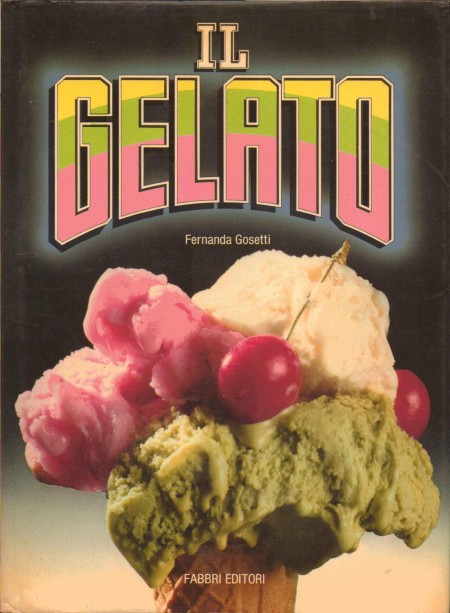
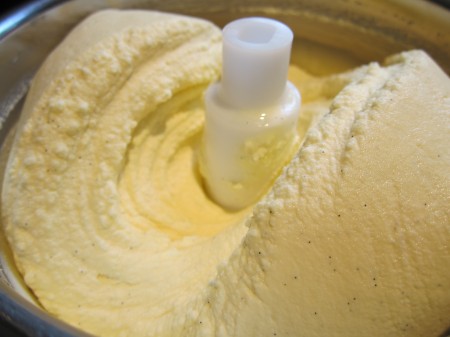
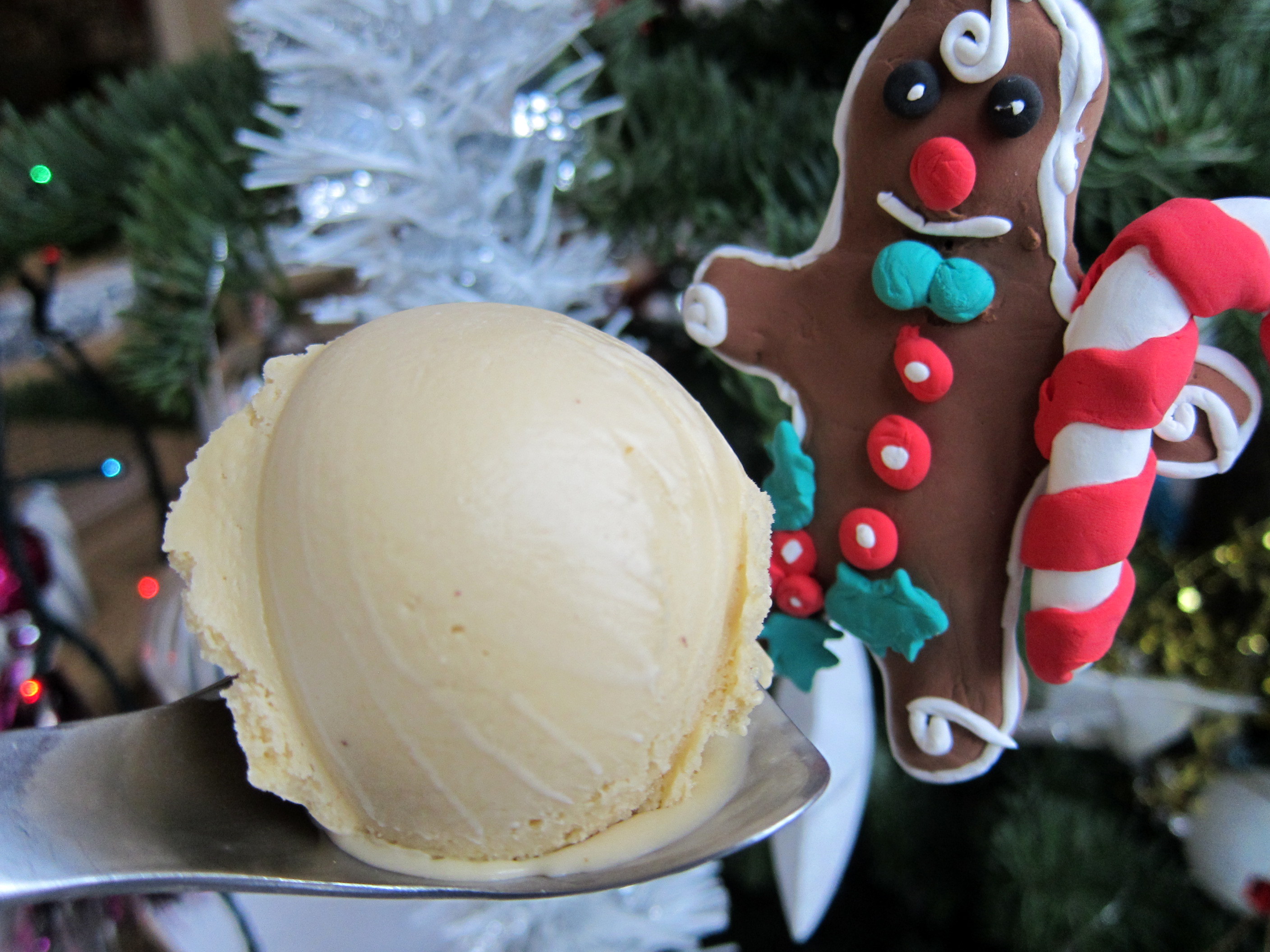
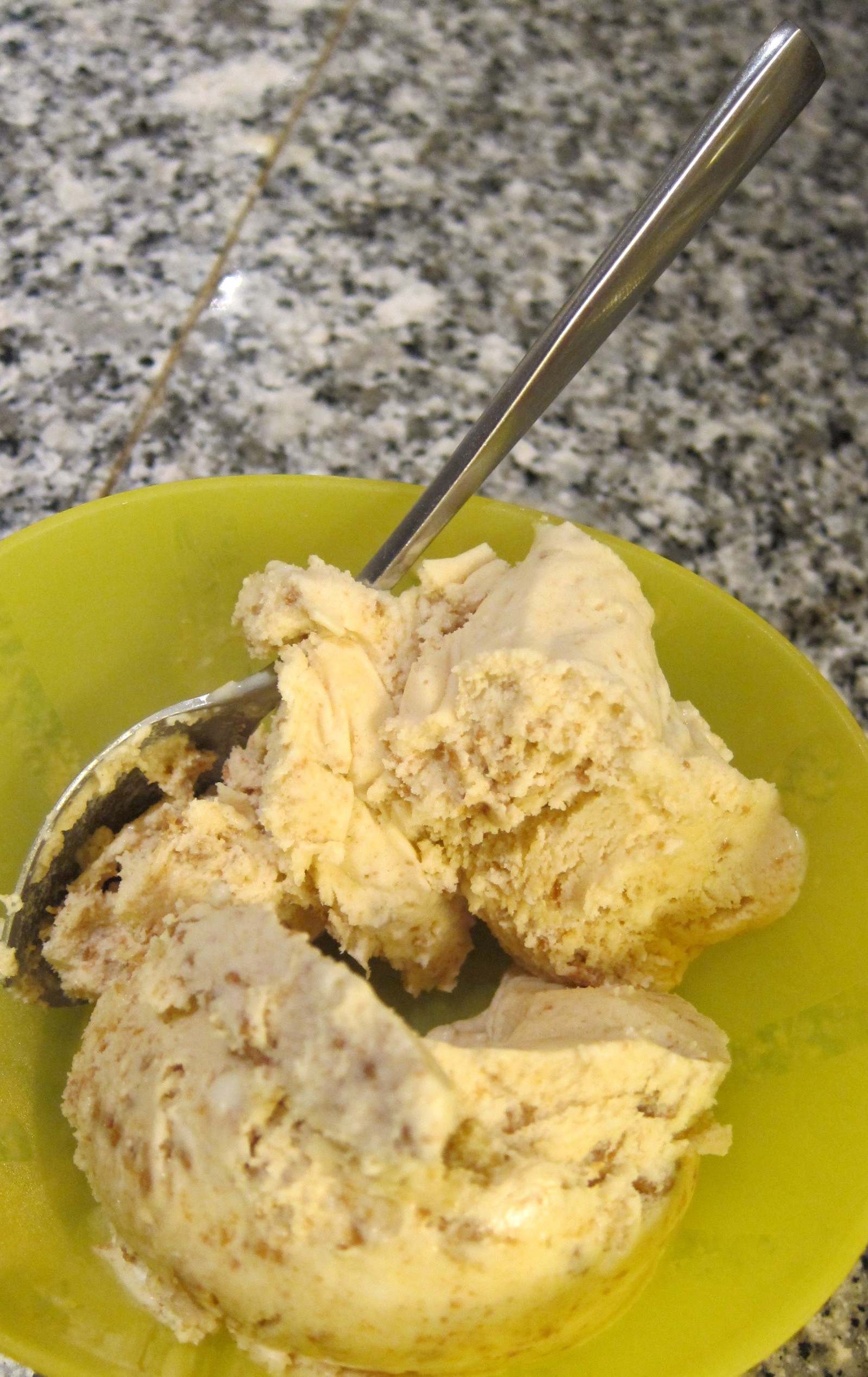
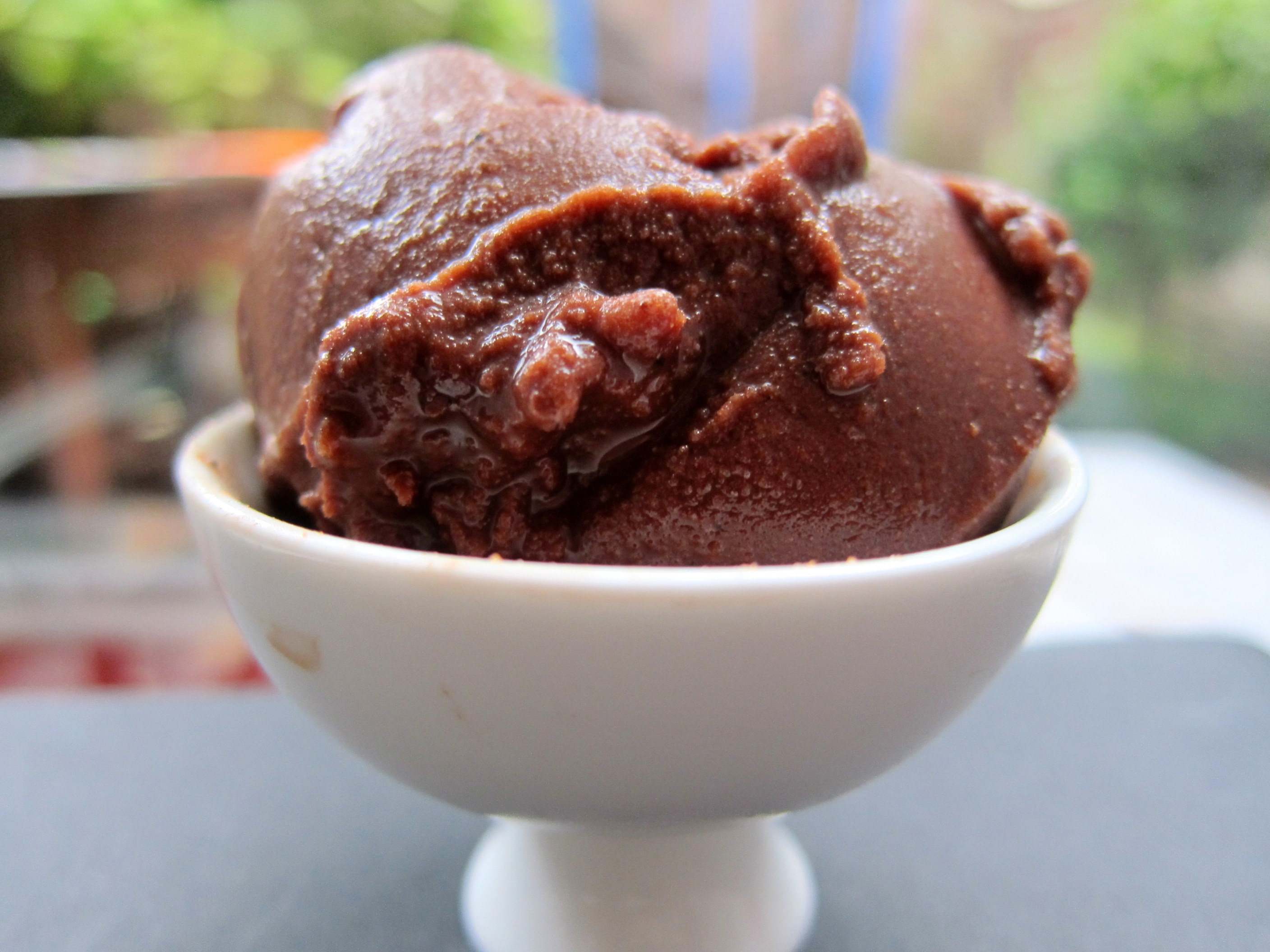


Hej,
Köpte mig en glassmaskin i helgen och första testet av glass blev väl inte det bästa. Efter lite beklagande över det hela på FB så tipsade din syster mig om din eminenta glass sida.
Har nu läst om glasstillverkning mm här för en stund och vill mest tacka för en kanon bra blogg och då inte bara detta recept.
[I bought an ice cream machine this weekend but the first try-out did not turn out so well. After some complaining about it on FB, your sister told me about your eminent ice cream site. I’ve now read about making ice cream here for a while, and would like to give thanks for a super blog (and then not only because of this recipe)]
// Per
Hej Per!
Roligt att höra att du gillar bloggen, och lycka till med att få snurr på glassmaskinen. Hemgjord glass kan verkligen slå det mesta som man kan hitta i affärerna, så det är verkligen väl värt mödan:-)
[Happy to hear that you like the blog, and good luck with your ice cream machine! After all, home-made ice cream can really beat most of what can be found in the shops, so it really is worth the effort:-D ]
Hi Anders,
Gotta ask about your opinion on this: the last times when I have made ice cream, I have found some small, yellow clots therein, a bit buttery??? I have not churned the ice cream too long either (i e, no risk that the fat has turned to butter). Churning the ice cream takes about 25-30 minutes, and I use the French custard-base.
Best regards, Kenta
[Hallå Anders.
Måste fråga dig om din åsikt i min fråga.
Nu de sista gångerna jag tillverkat glass så har jag upptäckt att i den färdiga glasen så finns det en del små gula klumpar lite smör aktiga??. Nu till det roliga att jag inte har kört glasen för länge för gör du det så kan fettet i glassmeten bli till smör . Det tar på ett ungefär 25-30 Min för att få färdig glass med min maskin använder är den franska custard glass. Med vänlig hälsning kenta]
Hi Kenta,
Since you’re making custard, I would suspect that the clots are over-coagulated protein that has separated from the liquid. Too rapid cooking could be the reason, and I would recommend that you try to use lower temperature, stir relatively continuously and cool down the ice cream bases a s a p (and do keep whisking a little even after taking the base off the stove). Sometimes, such clotting can be reversed by vigorous whisking (off the heat!). In all cases, I would also suggest that you pass the ice cream base through a sieve to avoid any unwanted clots.
[Hej Kenta,
Eftersom du jobbar utifrån äggkrämsbas så misstänker jag att klumparna är koagulerat protein (från äggen). Sådant kan hända om man t ex värmer upp glassbasen alltför kvickt. Jag föreslår att du provar att sjuda glassbasen på en lägre temperatur och rör om/vispar relativt kontinuerligt medan du håller på. Kyl sen ned basen så fort du kan när den är klar (och fortsätt helst vispa den en smula även sen du tagit den av spisen). Ibland kan man faktiskt också söka rädda en olyckssituation genom att snabbt ta basen av värmen och sen vispa den frenetiskt. Hur som helst föreslår jag att du silar den färdiga glassbasen en gång sen den tagits av spisen, så du får bort eventuella oönskade klumpar.]
Hej
[I actually go about it exactly the way you set out, but I still get those small, buttery particles. Quite irritating …]
Anders jag jobbar just så som du beskriver när jag gör min äggkrämbas men ändå så får jag lite små smöraktiga partiklar smått irriterande
Well, unless you’re using some particularly fatty, non-homogenised dairy, I would still lean towards protein-lumps (several master chefs take the precaution to sieve their custards before churning, so it may clearly still happen even to those who “do it right”:-) ]
Såvida du nu inte använder fet och ohomogeniserad mjölk/grädde så skulle jag ändå gissa på proteinklumpar (många toppkockar silar tar det säkra före det osäkra och silar sin smet, så det är tydligt att fenomenet ibland kan drabba även den som “vet hur man ska göra”)
Hi Anders,
In step 2, you use 75ml of the 100ml of cream. What happened to the last 25ml ?
Kind regards,
Peter
Hi Peter,
Thanks for being so observant; this was a mistake and is now corrected – simply add (all) the cream in step 2.
hello. In the recipe it does not mention if the cream is single double or whipped or clotted. Any idea which sort? your help is much appreciated as is your blog.
Kind regards
Hello Robert,
Glad to hear you like the blog!
Unfortunately, there is no universal standard for cream labels (which tend to different from country to country). But unless otherwise specified, I usually use creams with about 35 % fat. In the UK and in Canada, that would translate into ‘whipping cream’, in the US (generally speaking) into (fatter types of) ‘light whipping cream’ or (least fatty types of) ‘heavy cream’. In Australia, I believe that ‘single cream’ often would be on the mark.
Thanks so much. Whipping cream now on my shopping list.
Hi Anders,
Your site is marvelous! And this recipe has helped me go from ice cream failure to virtuoso. The instant read thermometer is a great tip.
I used an ice water bath to cool the custard down and the finished ice cream was perfect and made even better with a drizzle of homemade ganache.
Thank you,
Andra
Andra,
Thank you – very happy to hear that you like the site 🙂
hi ,
I’m watching your blog for a long time , enjoying and enriching myself with your knowledge about ice cream.
With your promotion I would like to ask you a few questions:
1. I tried to make the “Sicilian style gelato”, its very good but after freezing it “you cant eat it”, it’s like stone hard! What do you suggest to add to the recipe in order to make it soft after taking it out from the freezer?
2. Is it necessary to add alchohol to the ice cream (2-3 tea spoon)in order to make it soft ? What kind of alchohol can I add ? Is it suitable for every recipe or only for specific ones?
3. Is it necessary to add “tapioca gum”/”guar gum” to the ice cream ? Would it make it softer and creamy after taking it out from the freezer?
4. What would happen if I add 450 ml of whole milk + 100 ml fat cream instead of 500 ml of cream + 100 ml of whole milk ? Is it gonna be the same cream? The same softness?
Thanks for your replying.
Hi Moti,
Glad to hear that you like the blog 🙂
Let’s go on to your questions:
1. The freezers we tend to have at home are typically much colder than the special freezers used to display gelato in ice cream shops = it is by no means strange if the ice cream freezes hard, and it may be a good strategy to take it out about 20 minutes before serving it (in fact, the better quality of the ice cream, the more likely it is to require this type of ‘warming up’). Still, if your ice cream really becomes rock-hard, it may indicate that it contains too little air, fat or sugar. The amount of air depends a lot on your ice cream machine (or your ability to whisk your ice cream base if you work without an ice cream machine). Too little fat and/or sugar may also affect the consistency of your ice cream in a negative way, but in Sicilian gelato, the relative lack of fat should normally not be a problem since the starch acts as stabiliser instead.
2. It is seldom necessary to do it, but adding alcohol to any ice cream will make it softer (since alcohol, unlike water, does not freeze). Generally, some neutral hard liquor (like plain vodka) could be added to most ice creams to achieve this effect. Other possibilities include adding flavoured, often sweetened, hard liqueurs (like Kirsch and Grand Marnier) where the flavour of the alcohol go well together with the flavour of the ice cream.
3. It is not necessary to add tapicoa gum, guar gum or any other such stabiliser, but depending on the recipe, it might make the consistency and texture of an ice cream better. Still, it depends on the recipe. If your aim is to make a typical Italian or French ice cream softer/creamier, I would for instance suggest that you instead increase the amount of eggs and/or cream.
4. I am not certain if you refer to any specific recipe here, but in general, a higher proportion of cream will typically make an ice cream softer and help to improve texture and consistency. In other words – if you remove a lot of cream, you also remove a lot of the fat which helps to “build” the ice cream. If so, you might have to consider supporting the consistency some other way (like with starch, or by adding other stabilising ingredients).
Hi anders!
I’m trying to look for a suitable vanilla ice cream for frying. (Check this out if you havent tried it before. http://m.goodfood.com.au/good-food/cook/recipe/deepfried-icecream-in-coconut-20131101-2wr6c.html#method ) given the gelato is rock hard do you reckon this will melt slower than your typical ice cream base? In my case the slower it melts the best for frying! Hence the store ice creams will fail terribly for this as its already soft.
Thanks!
Hi Stt,
Thanks for the recipe. Most any of the vanilla ice cream recipes you can find on the site should work: home-made ice creams typically freeze much harder than “commercial ice cream” since they don’t contain the industrial grade-ingredients that keep the latter soft(er). If you buy “quality ice cream” made with “natural” ingredients, you will notice the same thing.
It is of course important to keep the ice cream frozen before frying it, but ultimately, your success will also depend on the batter and a not-too-long time in the frying pan. Should your ice cream still melt too quickly, try putting on more batter, freeze and try again! Best of luck 🙂
Hi Anders,
Tried this one today…result was superb! Made it even slimmer-er by doing half sugar/half Canderel and it was still lovely. Much lighter and more scoffable than the wonderful, heavenly but ultimately deadly butter queen recipe we tried last time. As gorgeous as that was, this is far more sustainable in a healthy world!!!
Thanks so much as always,
Max and Ria Harris
Good to hear! And yes, it is nice when you find some slim(mer) recipes that you still enjoy 😉